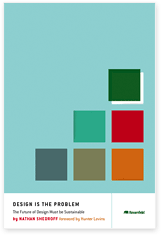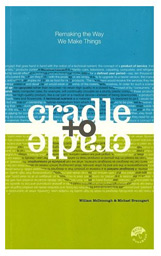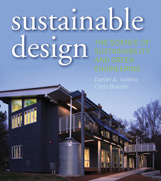This weekend seems like a great weekend for reading, so I thought I would share some upcoming green books in my queue. I seem to have a sustainable design theme going, although that should come as no surprise to anyone who regularly reads my blog.
 Sustainability in design has always interested me, mainly because so many problems with current products on the market can be solved by a tweak in the design. For many, this can entail looking at a product with a whole new perspective- which can prove difficult in many situations. Take for example one of the books, Design Is the Problem: The Future of Design Must be Sustainable.
Sustainability in design has always interested me, mainly because so many problems with current products on the market can be solved by a tweak in the design. For many, this can entail looking at a product with a whole new perspective- which can prove difficult in many situations. Take for example one of the books, Design Is the Problem: The Future of Design Must be Sustainable.
The author, Nathan Shedroff, considers how paper bags may be worse than plastic for the environment or how a Prius may have a larger footprint than a H2 Hummer. Now these are pretty bold statements, so I am intrigued as to how he crafts his argument.
 Another book along those same lines, Cradle to Cradle: Remaking the Way We Make Things by William McDonough and Michael Braungart, explores the cradle to cradle process (or C2C, the ‘birth’ of a product all the way through to the ‘death’ and re-birth of the raw materials) and how it can and should be implemented into the consumer stream.
Another book along those same lines, Cradle to Cradle: Remaking the Way We Make Things by William McDonough and Michael Braungart, explores the cradle to cradle process (or C2C, the ‘birth’ of a product all the way through to the ‘death’ and re-birth of the raw materials) and how it can and should be implemented into the consumer stream.
This is a concept of growing interest (you can tell from increasing products advertising cradle to cradle certification), and with good reason. Our ‘disposable’ society needs a shift and the best way to do that is to make products with their ‘end-life’ in mind.
 The two previous books are great reads for everybody, geared towards educating and inspiring with varying layers of depth. As an ecologist, my scientific background begs for more granular depth. At times, I like to see the data, the science behind things, the technical stuff. This is where Sustainable Design: The Science of Sustainability and Green Engineering
The two previous books are great reads for everybody, geared towards educating and inspiring with varying layers of depth. As an ecologist, my scientific background begs for more granular depth. At times, I like to see the data, the science behind things, the technical stuff. This is where Sustainable Design: The Science of Sustainability and Green Engineering by Daniel A. Vallero and Chris Brasier comes in.
Providing “…readers with the scientific principles needed to guide their own sustainable design decisions”, and “written to enable readers to take a more scientific approach to sustainable design”, it will be sure to entice all you architects, engineers and scientific types.